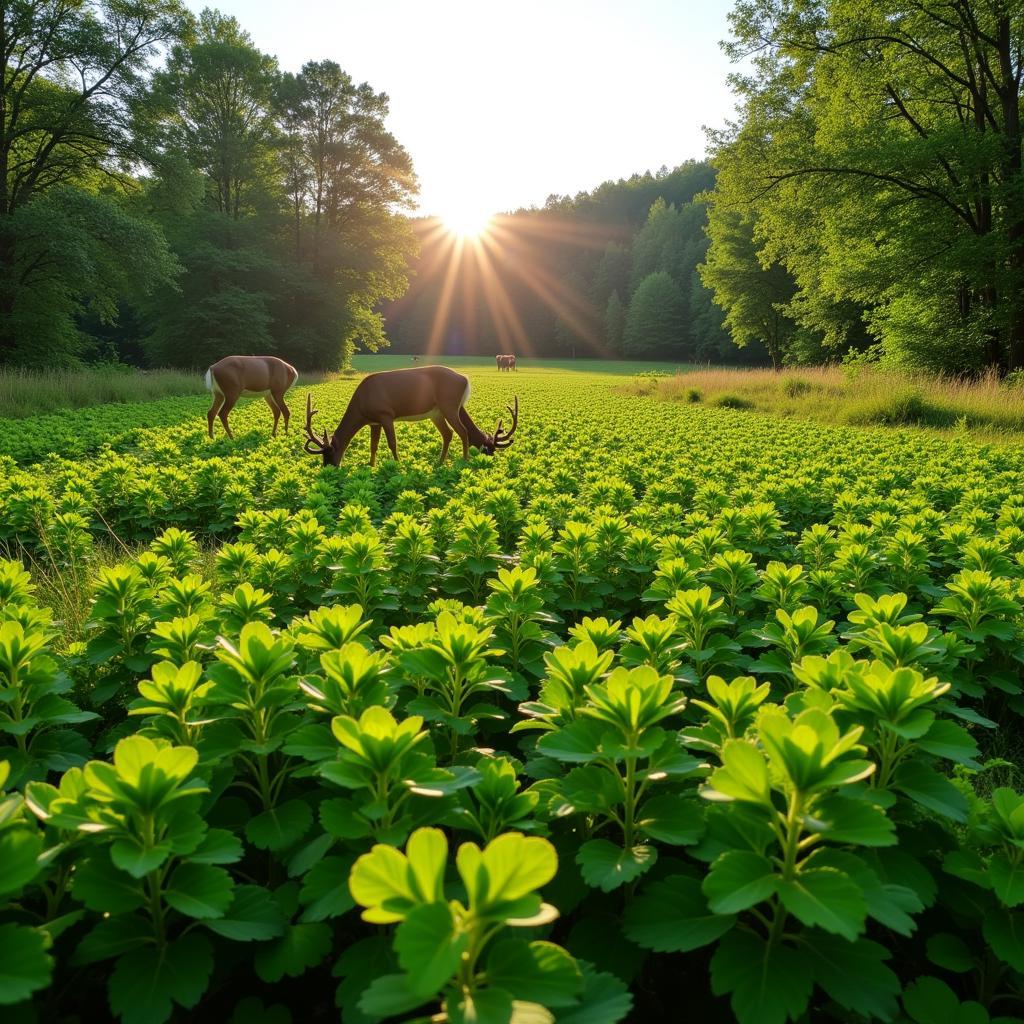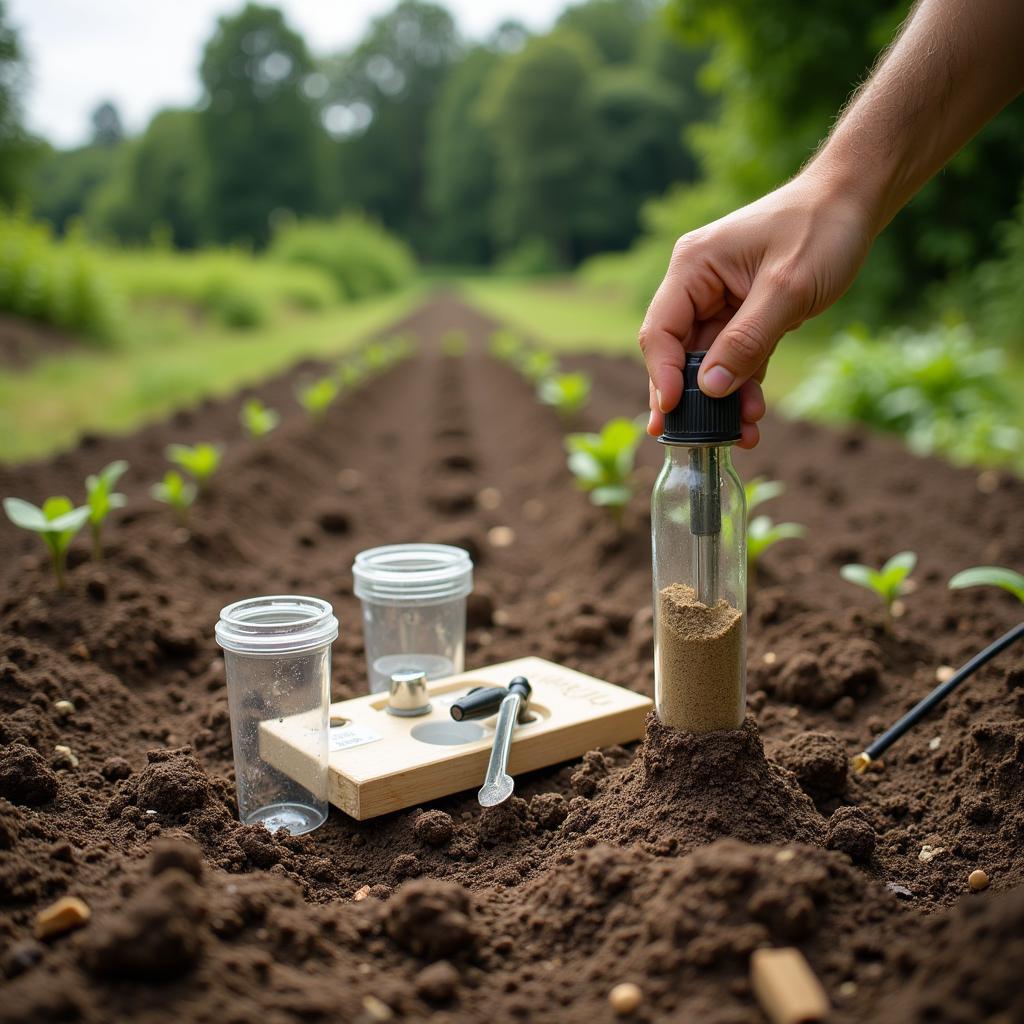Perennial Food Plots offer a fantastic way to provide consistent nutrition for wildlife year after year with minimal maintenance compared to annual food plots. They’re a worthwhile investment for any landowner or hunter looking to enhance their property’s appeal to deer, turkey, and other game. This guide explores the benefits, planning, and maintenance of perennial food plots, ensuring you’re equipped to establish a thriving, sustainable food source for wildlife.
Understanding the Advantages of Perennial Food Plots
Unlike annual food plots that require reseeding every year, perennials offer long-term benefits. They establish a robust root system, providing erosion control and improving soil health. This makes them particularly beneficial for challenging terrains or areas prone to soil degradation. Furthermore, the reduced need for plowing and replanting translates to significant time and cost savings. A well-maintained perennial plot can produce forage for several years, freeing you up to focus on other aspects of wildlife management. For those interested in deer and turkey, you might want to check out the best food plot for deer and turkey year-round.
Choosing the right perennial species is crucial. Consider factors like your local climate, soil type, and the target wildlife species. Clover, chicory, and alfalfa are popular choices, offering high nutritional value and attracting a variety of wildlife. Remember to research your local regulations regarding allowed species for planting. Are you looking for other food plot options? Check out best food plot to plant in august for more ideas.
 Clover Field in a Perennial Food Plot
Clover Field in a Perennial Food Plot
Planning and Preparation for Your Perennial Food Plot
Careful planning is essential for a successful perennial food plot. Begin by analyzing your soil. A soil test will reveal its pH level and nutrient content, guiding your fertilizer and lime applications. Next, choose a location with adequate sunlight. Most perennials thrive in full sun, requiring at least six hours of direct sunlight daily. Proper site preparation involves removing existing vegetation, tilling the soil, and ensuring good drainage. This creates an ideal seedbed for optimal germination and establishment. If you’re interested in exploring other perennial options, consider perennial deer food plots for a more specific focus.
 Soil Testing Kit for Perennial Food Plots
Soil Testing Kit for Perennial Food Plots
Planting and Maintaining Your Perennial Food Plot
The best time to plant perennial food plots depends on your location and the specific species you’ve chosen. Generally, spring or fall planting is recommended, allowing for adequate root development before extreme weather conditions. Follow the recommended seeding rates for your chosen species and ensure proper seed-to-soil contact during planting. Initial maintenance involves regular watering and weeding to give your perennials a strong start. For food businesses, Alfa Food offers a range of products and services you might find interesting.
Once established, perennial food plots require less maintenance than annuals. However, periodic fertilization and weed control are necessary to maintain their productivity. Overseeding can also help to replenish and strengthen the stand. Observing your plot regularly for signs of pests or disease will allow for timely intervention, preventing significant damage. Exploring future technologies in the food industry? Future Food Tech SF might be an event worth considering.
Conclusion
Perennial food plots are a valuable investment for enhancing wildlife habitat. By understanding the principles of planning, planting, and maintenance, you can create a thriving and sustainable food source for years to come. These plots not only benefit wildlife but also contribute to soil health and erosion control, making them a worthwhile addition to any property. Begin your journey towards establishing a successful perennial food plot today!
FAQ
- How long do perennial food plots last? With proper care, they can last for several years.
- What are the best perennial species for my area? Contact your local agricultural extension office for recommendations.
- When should I plant my perennial food plot? Spring or fall is generally the best time.
- How much maintenance do perennial food plots require? Less than annuals, but periodic fertilization and weed control are necessary.
- Where can I get my soil tested? Most agricultural extension offices offer soil testing services.
- Can I plant perennials with annuals? Yes, you can create mixed plots for added diversity.
- What are some common pests to watch out for? Deer, rabbits, and insects can be pests in food plots.
For further support, please contact us at Phone: 02437655121, Email: minacones@gmail.com, or visit us at 3PGH+8R9, ĐT70A, thon Trung, Bac Tu Liem, Ha Noi, Vietnam. Our customer service team is available 24/7.